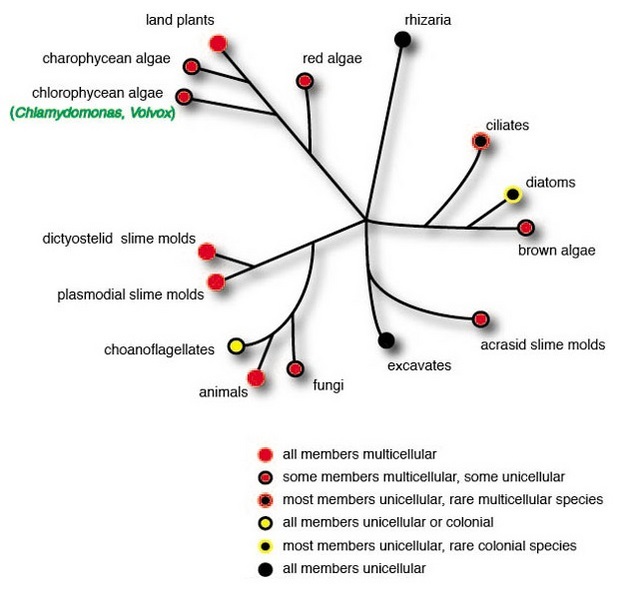Multicellularity evolved from multiple independent origins.
Keywords
Flag Inappropriate
Delete Content

Multicellularity evolved from multiple independent origins.
Shown are representatives of all major lineages of eukaryotic organisms, color coded for occurrence of multicellularity. Solid black circles indicate major lineages composed entirely of unicellular species. Other groups shown contain only multicellular species (solid red), some multicellular and some unicellular species (red and black circles), or some unicellular and some colonial species (yellow and black circles). Colonial species are defined as those that possess multiple cells of the same type. Some lineages shown here that contain some multicellular species, such as the chlorophycean algae (of which the volvocine algae are members) also include several colonial species. For simplicity, many unicellular lineages that are closely related to the multicellular lineages depicted here are not shown. The existence of such groups provides evidence that multicellularity evolved independently in the sister lineages.
This image is linked to the following Scitable pages:
How does multicellularity evolve? Scientists who study a family of green algae that includes unicellular Chlamydomonas and multicellular Volvox are beginning to find answers to this question.





















Comments
CloseComments
Please Post Your Comment